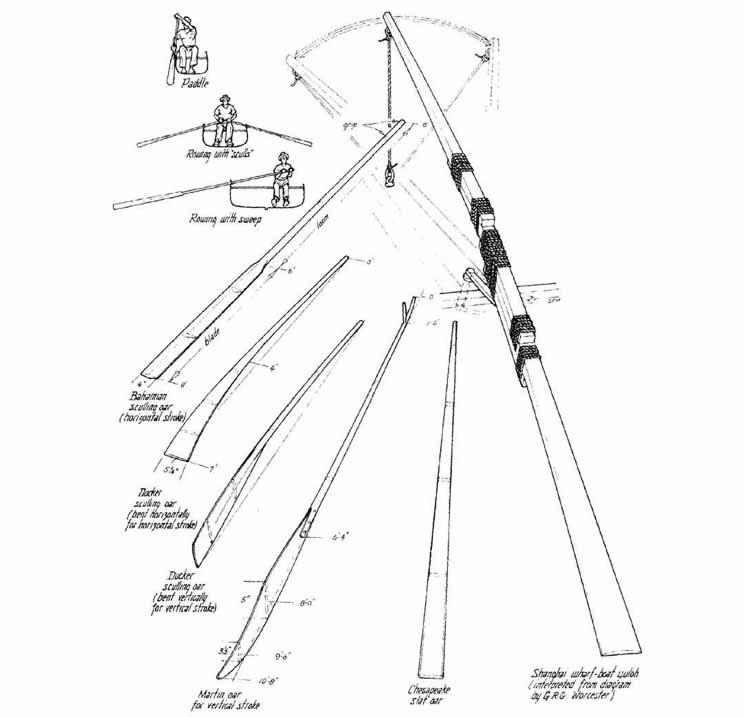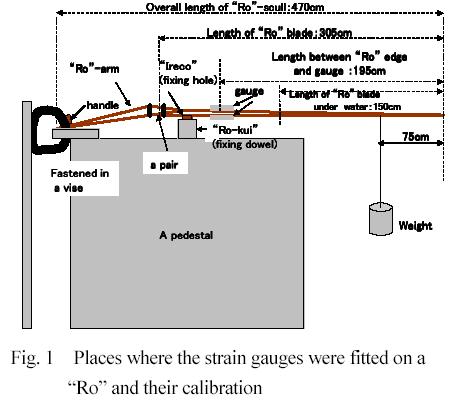Rowing with one oar: Sculls, Yulohs and the Ro

Sculling is a method of propelling a boat using a single oar, which is pushed side-to-side through the water, and twisted appropriately, to move the boat. A yuloh is a Chinese version of this idea: a bent oar with a tether, which partially automates the process, and minimizes the upper-body strength required.
Unlike the Aleutka, there is a fair amount of information on the web on this topic. Google turns up well over 100 pages, and this is one more.
Small Boat Journal had an excellent pair of articles on sculling, and you can find them on the net at Part I, Part II and the rest of Part II (these were in issues 45 and 46).
A few years later, Woodenboat ran another article on single-oared propulsion.
There is a company making a fin to clamp onto your rudder in lieu of a yuloh. It doesn't look as if it would really be a good substitute, since it doesn't seem to give much leverage.
There are a number of people actually using these things. One example is one of my neighbors, who has been using a yuloh to get around between Juneau and Admirality Island when the wind dies. You can see pictures of the construction and use of the yuloh on Mark Zeiger's Martha Jane site.
The Japanese used something like this, too. Here is a Japanese rowing enthusiast's site, with some information on the Ro, the traditional Japanese scull, and some pictures of the Ro. I wish there was some more detail, and larger pictures, but this is a great start.
Some Japanese researchers have written a paper entitled: Measurement and Quantitative Evaluation of Veteran Seaman’s Skill to Work a “Ro”, Japanese Style Scull, Fitted in a Wooden “Wasen” Existing in Aba Village, Nagasaki-City . If you don't know Japanese, the abstract is most of what you'll be able to get out of this:
In this study we desired to know the core skill of working a “Ro” - scull , before the skilled people become rare. We tried to make a quantitative evaluation of working a ``Ro''-scull on a wooden boat of traditional ``Wasen'' type operated by a veteran seaman. We constructed the following data recording and analyzing system, to measure the skill of working a ``Ro''-scull. 1) Measuring the force which is given to ``Ro'' and ``Hayao''-rope by the testee sculler with a strain guage. 2) measuring the characteristics of the six free motions of the test boat caused by the testee sculler. 3) Measuring the ship's speed and location data from GPS.If you do know Japanese, please go read the ro article and tell us what it says!
From the above measuring and analyzing, we could obtain the following information.
In contrast to the unskilled sculler, the veteran sculler didn't give much tension to ``Hayao-rope '' though both gave almost the same force to ``Ro-blade''. A yaw presents, too,the correction of the boat's course. Since the veteran sculler took a course beforehand which turned a little into the wind, with estimating the driftage, he didn't need to correct the boat's course so often not like the unskilled sculler.
Throughout the analysis of data from the veteran scullers, we could present some knowledge of working a ``Ro'' to the beginners.
 The article does have a picture showing how they instrumented their test ro (on the left). It is valuable for the dimensions it gives. Notice that the paper mentions that the scullers found the test ro ``too heavy'', so that may mean that the dimensions were off, or that the construction was too heavy.
The article does have a picture showing how they instrumented their test ro (on the left). It is valuable for the dimensions it gives. Notice that the paper mentions that the scullers found the test ro ``too heavy'', so that may mean that the dimensions were off, or that the construction was too heavy.
The dimensions given in the diagram are:
- Length overall: 470 cm (185 inches, or 15 feet, 5 inches).
- Length of blade (not counting the angled handle, that is): 305 cm (120 inches, or 10 feet).
- Length of ro blade underwater: 150 cm (59 inches or 4 feet, 11 inches).